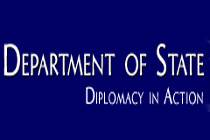Scales of Justice: A History of Supreme Court Nominations
According to Backstory:
Just in time for the Kagan confirmation hearings, BackStory is delving into the long history of appointments to the Supreme Court. What qualities did presidents and lawmakers look for in Supreme Court justices 200 years ago, and how have those expectations changed? How much have nominees’ personalities and backgrounds mattered in the past? Was the confirmation process always as “politicized” as it seems today? Was it more so? How has media coverage affected the process? Join the History Guys as they explore the highlights – and lowlights – of Supreme Court nominations past.


